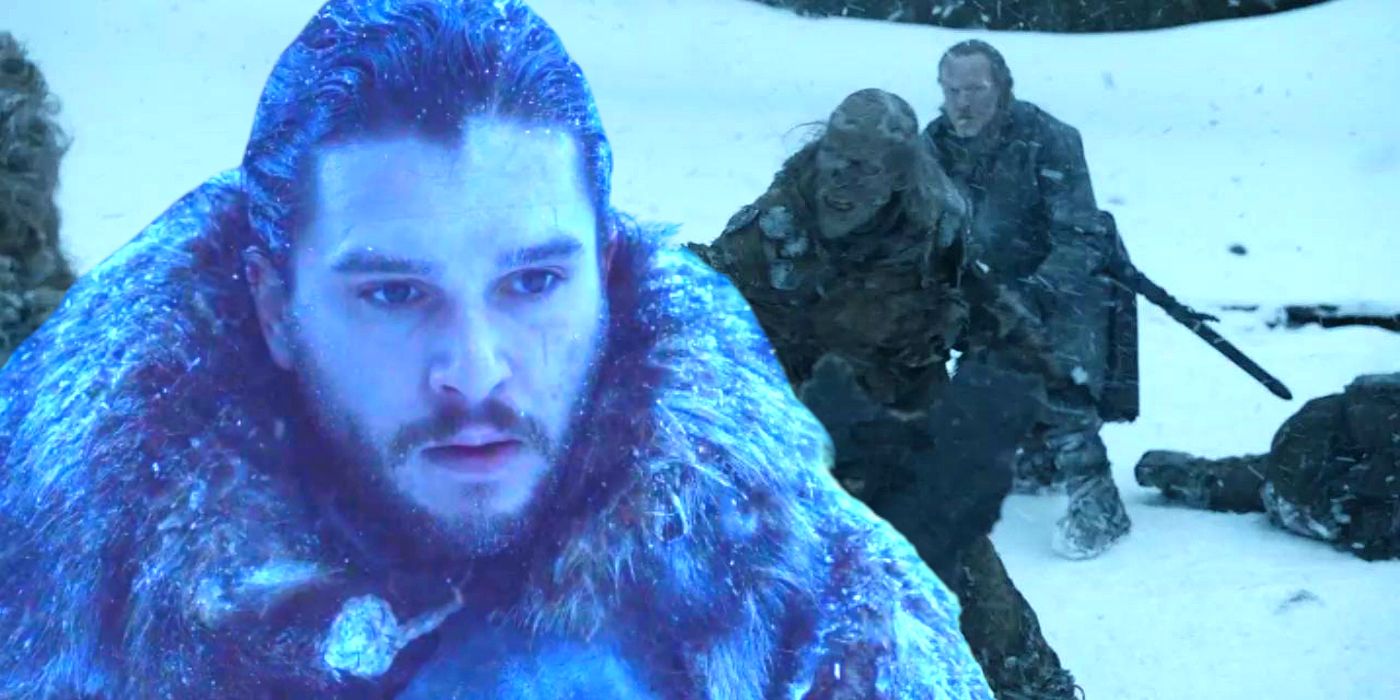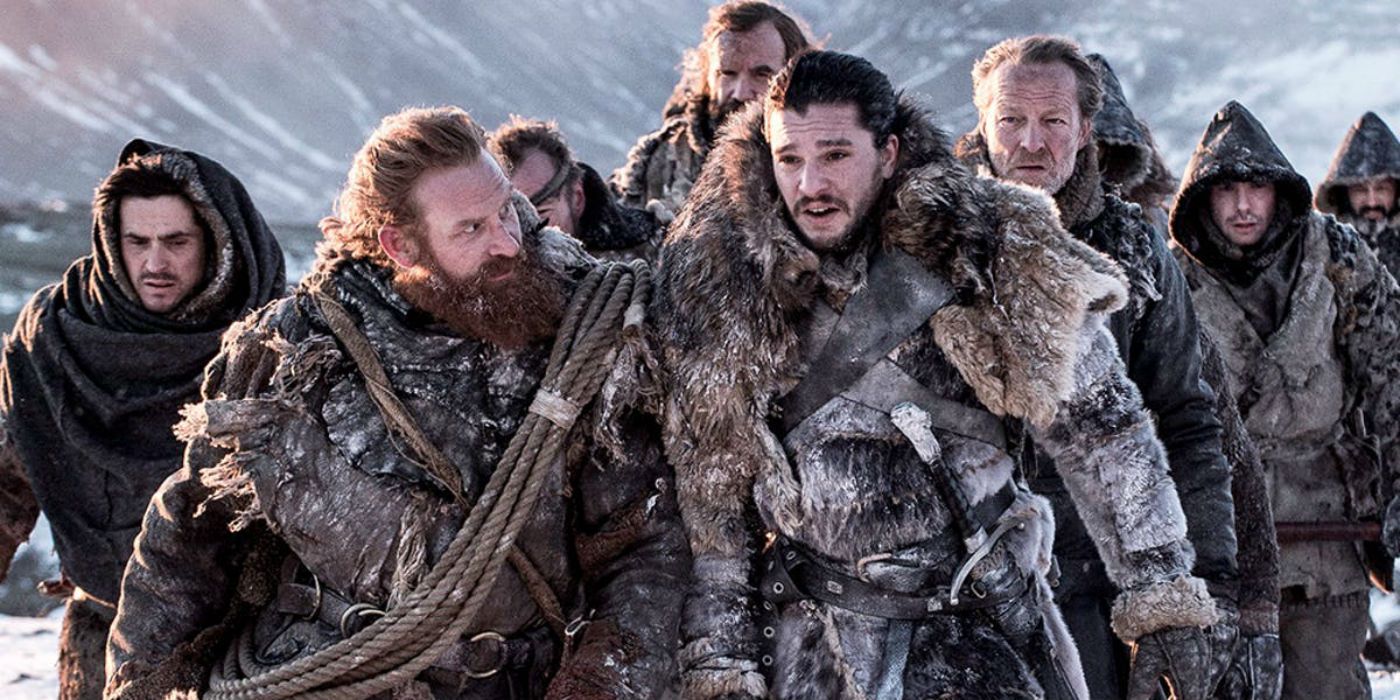Game of Thrones season 7 brought about the show's dumbest storyline - a plot to go beyond the Wall and capture a wight - but why did it need to happen in the first place? The penultimate season of Game of Thrones marked a real shift in the show's storytelling. With just seven episodes instead of the usual 10, the pace rapidly quickened as showrunners David Benioff & D.B. Weiss attempted to get all of the pieces in place for the eventual endgame.
That meant Game of Thrones season 7 saw some major characters coming together for the first time, not least meeting between Jon Snow (Kit Harington) and Daenerys Targaryen (Emilia Clarke), as Jon embarked on a mission to convince Westeros of the threat posed by the White Walkers. Understandably, many were rather skeptical about the notion that what amounted to ice zombies were going to come for them, or that they could get past the Wall even if they were real, and so Jon was tasked with getting proof. The idea stemmed from Tyrion Lannister (Peter Dinklage), who asked Jon to capture a wight from beyond the Wall and bring it back to Westeros for inspection, so that everyone could see the undead with their own eyes.
As just about anyone could have predicted, the plan went horribly wrong: in Game of Thrones season 7, episode 6, "Beyond the Wall", Jon and the rest of his group - a who's who of Westeros figures, including the Hound (Rory McCann), Tormund Giantsbane (Kristofer Hivju), Jorah Mormont (Iain Glen), Gendry (Joe Dempsie), Beric Dondarrion (Richard Dormer), and Thoros of Myr (Paul Kaye) - were set upon by White Walkers and wights, and before long, trapped. That necessitated a rescue, thanks to a fast Gendry and even faster raven, which arrived in the form of Daenerys and her dragons, one of whom - Viserion - the Night King was able to kill and take as his own. It marked what was arguably the nadir of the show's final two seasons, and certainly the plan to capture a wight was perhaps the worst seen in the entire show because it made zero sense, but it was all designed with a very specific purpose. As Weiss says in the book Fire Cannot Kill a Dragon: Game of Thrones and the Official Untold Story of the Epic Series:
"We were talking about breaching the Wall and trying to figure out what pieces we already had on the board without introducing new deux ex machina pieces. What was in the world already that could conceivably knock down the Wall? Just getting the Night King past the Wall didn't do it; just getting the White Walkers past didn't do it. You needed to get an army of a hundred thousand dead men past the Wall, which means a giant hole. We were racking our brains as to what could do that. Then we realized there would be something massive in the show - they weren't massive at the time we thought of this - and that was the dragons. But getting a dragon north of the Wall was tricky."
Having a dragon be the answer to the Wall coming down is actually understandable, although there were other pieces on the board Game of Thrones could have used instead. Back in season 2, Samwell Tarly (John Bradley) found a cache of dragonglass, with an old warhorn alongside it. It went ignored then, but it was speculated it could've been the Horn of Winter (or Joramun), which legend has it could bring the Wall down when blown. That might be how it happens in the book, in some way at least, and would've been one solution. Another was the mark the Night King left on Bran in season 6, who later passed through the Wall; that could have been spun into breaking its protective charms, allowing the Night King to bring it down more easily or just pass through/around it.
Even going down the dragon route, though, which certainly makes for the most impressive visual and fits with the greatest established magical beings in Game of Thrones, there ought to have been a better way than the plan to capture a wight. There could have been several reasons for a ranging beyond the Wall that end up going awry, with plenty of scope for there to be a believable rescue mission needed that Jon insists on going on, with him then sending to Daenerys asking for help, that would have been able to better fit with the show's logic. Unfortunately, this was where that broke the most.
Interestingly, Weiss notes that the dragons weren't that large when they thought of it, suggesting at least some of this had been planned long in advance. The entire "Beyond the Wall" episode was largely criticized for its plot holes (some fair, others a little less so), including the passage of time and speed of flight, and director Alan Taylor admits in Fire Cannot Kill a Dragon that he learned a lesson about the importance of the "underlying realism" in the show. The Wall coming down was always going to be a major event, and as such one fans had lots of varying opinions about. Game of Thrones' overall idea wasn't terrible, but it could have picked a better path to it.


